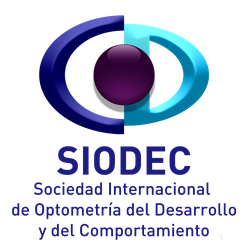
Elisa Aribau
SCSIODERV
Elisa Aribau has a degree in Optics and Optometry from the Escola Universitària d’Òptica i Optometria de Terrassa, specializing in Behavioral and Developmental Optometry after completing courses and internships in the United States.
She has been a member of the Spanish Society of Optometry since 1986, of the American Optometric Association since 1993, and of the International Society of Developmental and Behavioral Optometry (SIODEC) since its founding in 2008. From June 2010 to May 2014, she served as the president of SIODEC.
She has been the executive director of the I, II, III, IV, and V Congress of Behavioral Optometry and Development of SIODEC (November 2008, May 2010, May 2012, May 2015, and May 2017).
She directs the Elisa Aribau Training Classroom, which organizes in-person and/or online courses periodically. She is a trainer and a regular speaker at conferences and professional meetings in Spain and Latin America. She is an honorary member of the ORTOS association in Colombia.
She practices clinical activity in consultations in the towns of Igualada (Barcelona) and Inca (Balearic Islands).
